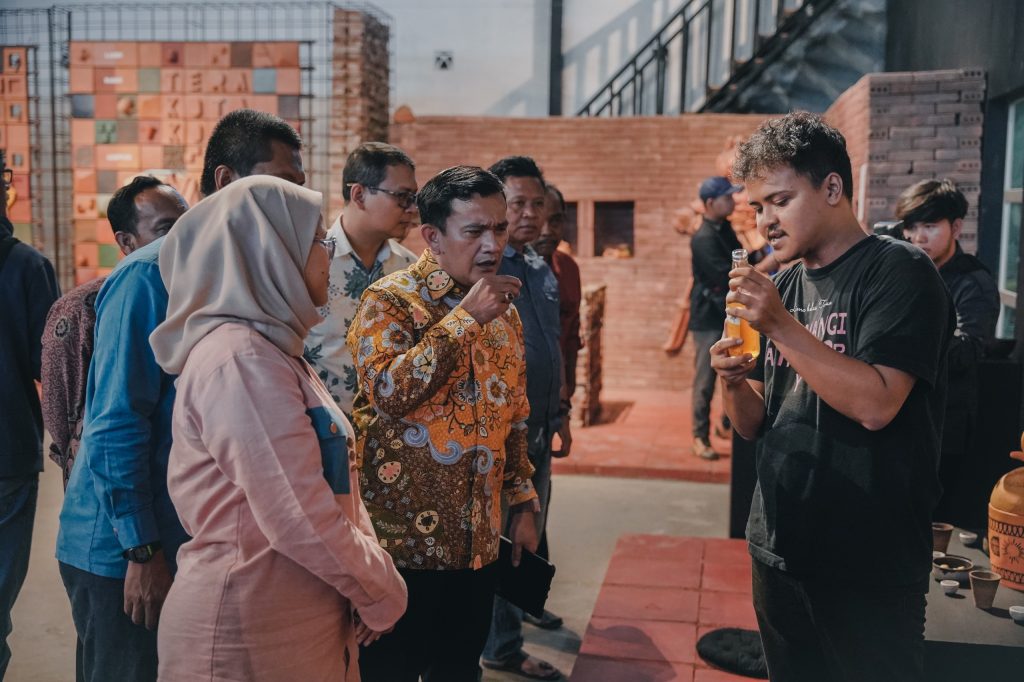The Terracotta Triennale is a collective action that extends the long-term aspirations of Terracotta City, part of the spatial planning framework for Majalengka Regency. As an art event, this triennial invites cross-disciplinary participants—artists, architects, archaeologists, policymakers, ceramists, and communities/collectives—envisioned as development actors who actively integrate artistic approaches into regional planning.


Under the theme “Kerja Tanah” (Soil Work), the triennial serves as a reflective moment to appreciate the “labors” of soil as a foundational concept, exploring it as a cultural resource through diverse artistic forms, programs, and activities. These efforts aim to reduce exploitative practices, honor the dignity of soil (not merely as land or material but as an idea), and elevate soil into a new cultural paradigm.
There is an overlooked dimension in understanding soil’s functions. If we truly recognize the myriad “labors” performed by soil—nurturing life (trees, oxygen, food, even tile industries), absorbing and containing—we might grasp its unique role in Jatiwangi: sheltering and protecting. This transcends literal definitions and embodies the “tangible work” of “Tanah”.


Reflecting on Jatiwangi art Factory’s (JaF) ongoing engagement with soil—reducing exploitative patterns, valuing soil’s dignity beyond its physicality, and transforming it into a cultural force—reveals a harmonious, almost romantic relationship. Soil and JaF mutually protect, sustain, and labor for one another. This dynamic will be recorded and celebrated in the 2024 Terracotta Triennale: Kerja Tanah.
Like the triennial’s essence—not merely an art event but a continuation of collective action toward Terracotta City’s long-term vision—the 2024 edition will open with the Progress Report II Exhibition. This marks the five-year journey since Terracotta City’s declaration in 2019, showcasing efforts to restore soil to its intrinsic functions.


Perhutana’s protective efforts, such as establishing the Collective Forest, exemplify soil as a living space. Meanwhile, the Regional Terracotta Implementation Unit (UPTD) and Posyandu Terakota create “Alternative Menus” for soil as a material, transforming handfuls of earth into higher value. Tajug Al-Fatihah (a prayer house) also integrates soil cultivation lessons (Ngaji Tanah) for its students alongside religious studies.
The vision of Terracotta City extends beyond aesthetics, weaving itself into the fabric of daily life. Kitchen Council explores soil-based kitchen essentials (tableware), while Skinklay responds to modern beauty trends through local wisdom—shifting from gripping soil to lightly applying it. These efforts aim to alleviate the exhaustion and burden placed on the “pundak tanah“.


In its pursuit of sovereignty, Gamis?? infiltrates policy spaces. Through cultural events, it conducts studies and lobbying efforts targeting local and national policies, while the Ceramic Music Consortium adds a spice of festivity and joy with a more popular approach via ceramic music.
The Apamart Ecosystem also explores economic pathways, conducting research and trials to reimagine alternative forms of economy. Ideas about improving quality of life, nurturing resources, and fostering a cultural economy are central to this endeavor.
This forms an intriguing composition for the strategic development of Terracotta City. Insights from the experiences documented in the “Progress Report II Exhibition” are expected to outline future possibilities for Soil Work. A secondary exploration of potential Soil Work initiatives for the Terracotta Triennale includes introducing new materials or concepts—“Terracotta Focus On!!”
- Terracotta Focus on Materials: Bamboo, Metal, Fabric, and more.
- Terracotta Focus on Lifestyle,
- Terracotta Focus on Music,
- Terracotta Focus on Education,
- and other focal points.
Photos : Alma Noka Alesandro











